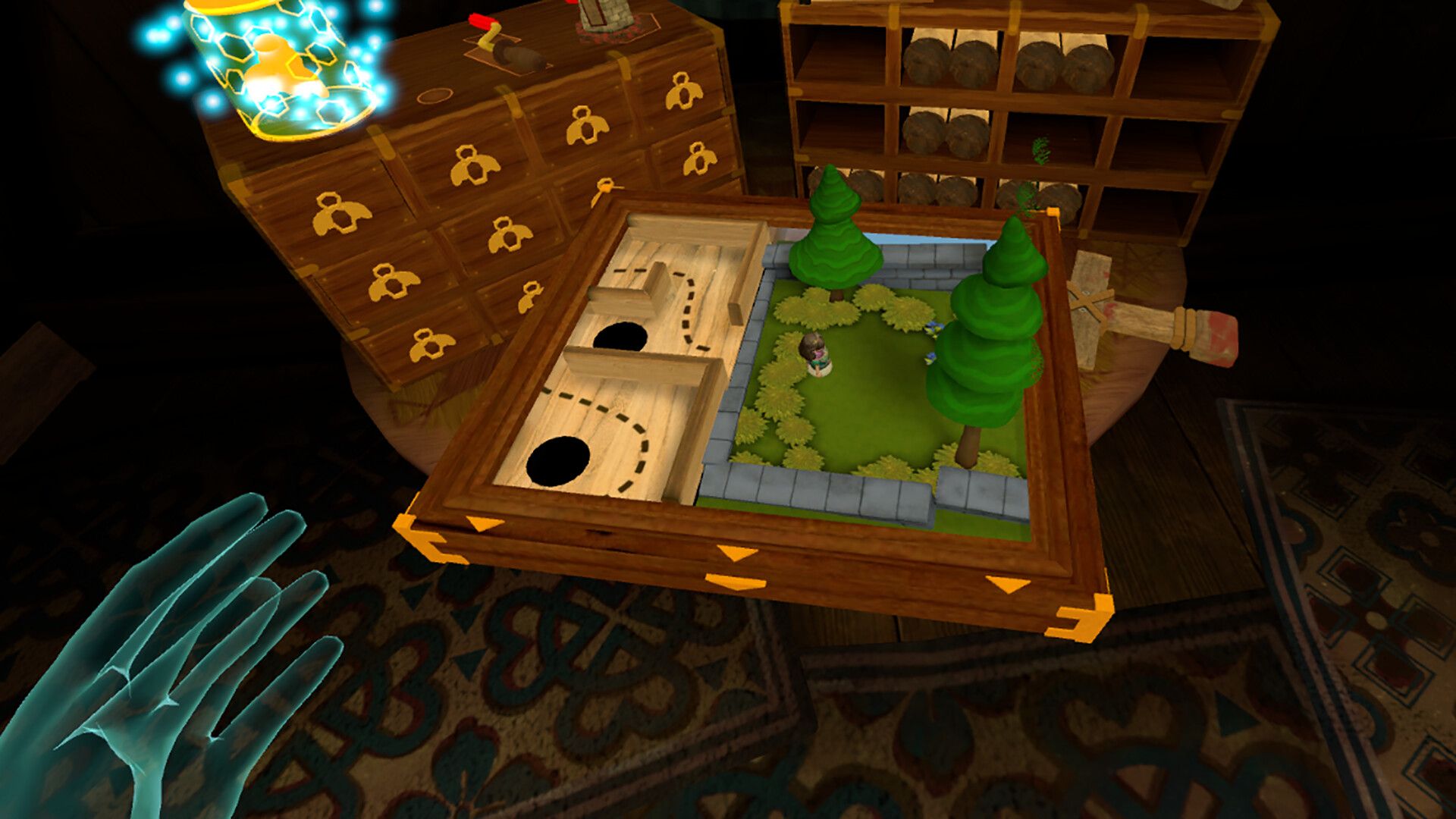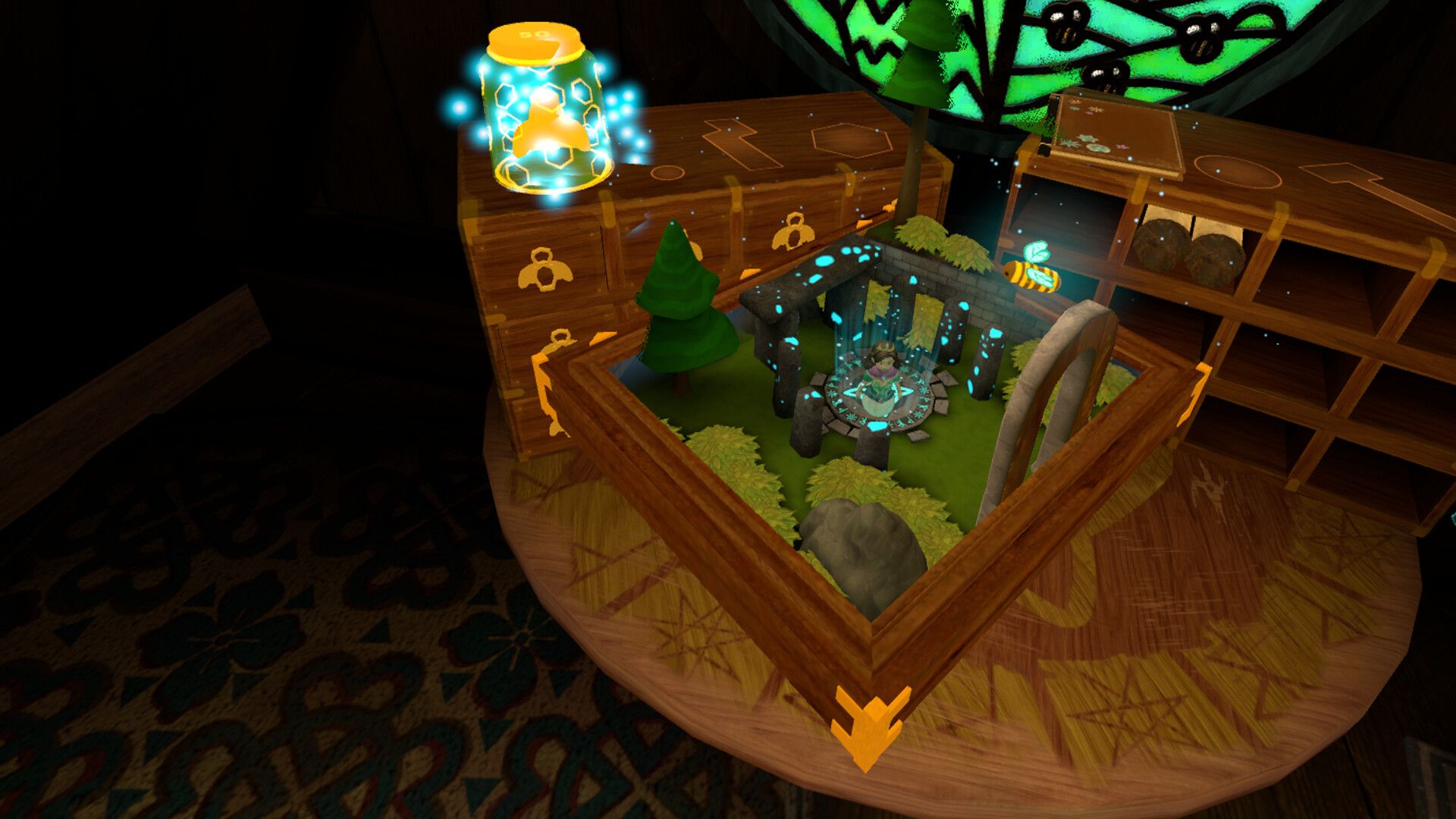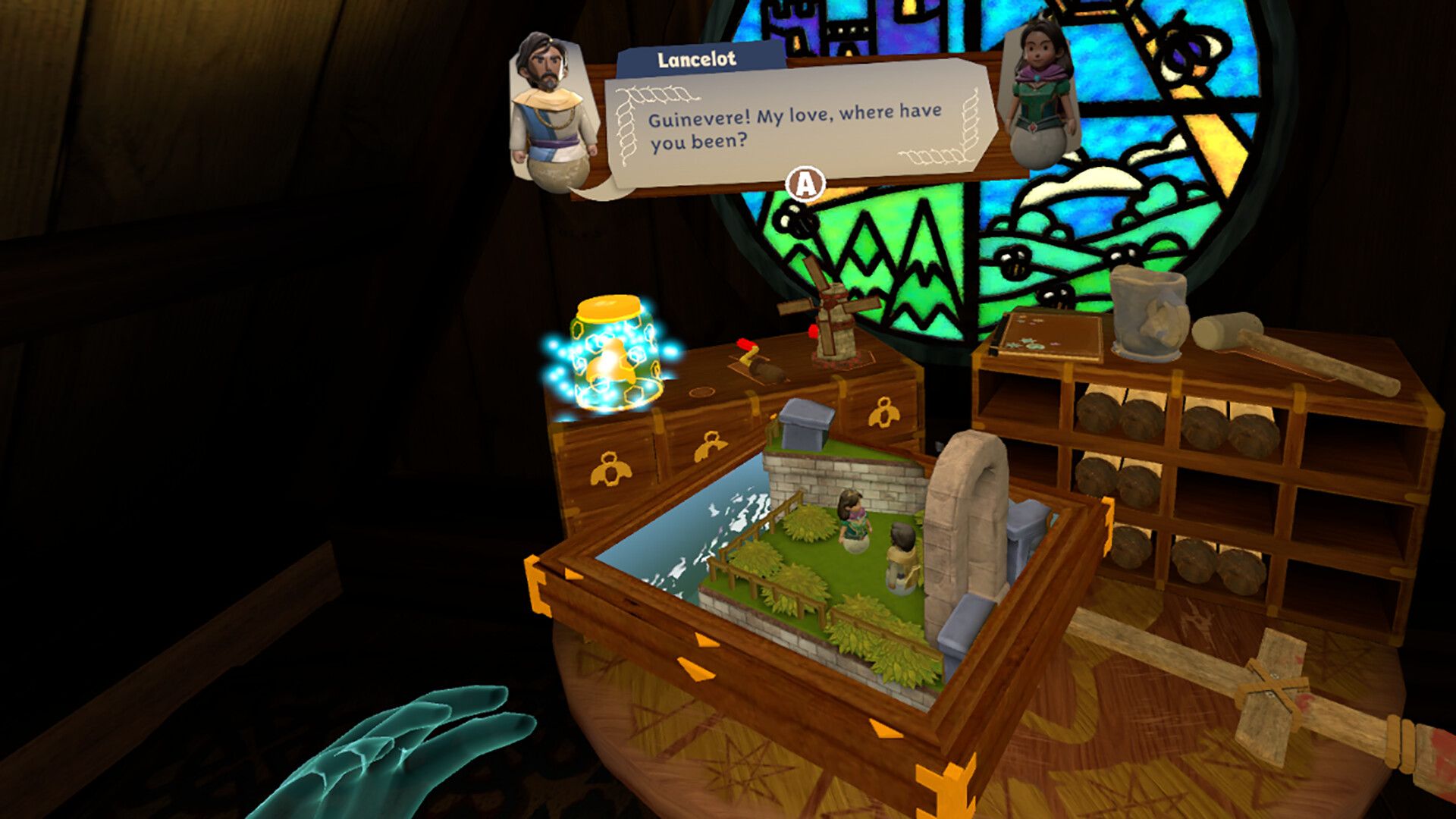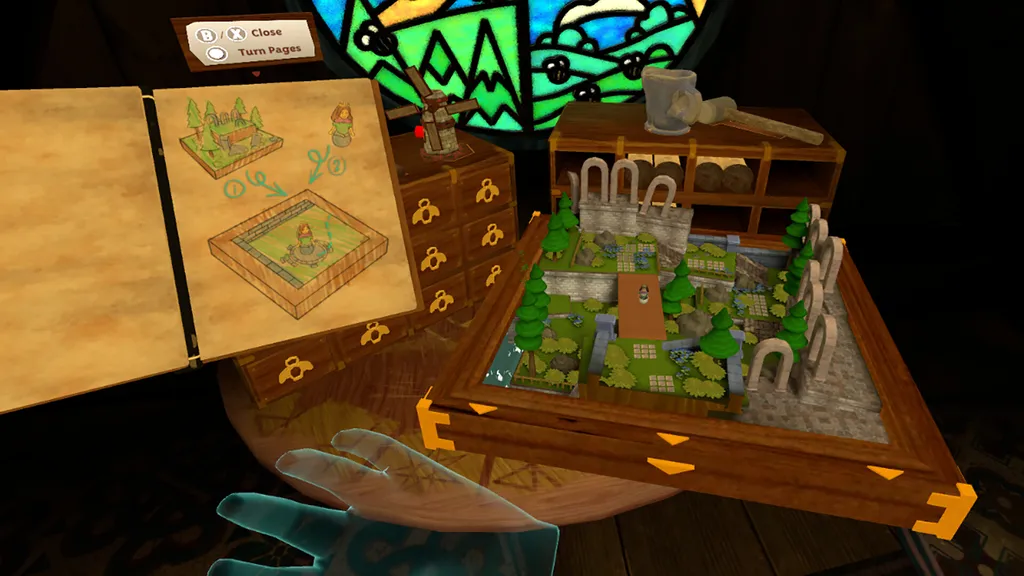A Knight In The Attic is available now for Quest and PC VR, but this charming Arthurian VR puzzle game ultimately falls a few marbles short. Read on for our full A Knight In The Attic VR review.
When I first previewed A Knight In The Attic at PAX East, its premise and sensibilities immediately charmed me. Masterfully melding multiple means of interacting with its world, it’s hard not to be impressed by Mighty Yell’s charming, inventive take on the tilt puzzle. Unfortunately, its best ideas are hampered by frustrating mechanical choices.
Platforms: Quest, PC VR (Review conducted on Quest 2)
Release Date: Out now
Developer: Mighty Yell Studios
Price: $9.99
By presenting a clever take on the tilt maze, A Knight In The Attic delivers a one-of-a-kind VR experience that really doubles down on new ideas. Unfortunately, not every one of those ideas hit its mark. A tilt maze that plays with and into the world around you provides a great initial gameplay loop, but it is also the source of a majority of the game’s issues. The often-simple puzzle design doesn’t sweeten the pot either.
A Knight In The Attic puts you in the role of a child exploring their grandmother’s attic. Peppered with nods to Arthurian legend, you spend most of your time playing a game within the game where you control Guinevere, Queen from the Knights of The Round Table’s mythos, as she embarks on a quest to find her missing husband.

You’ll place a small figurine of Guenivere into a tilt maze found in the attic, which opens up a toy-scale version of Camelot. You can move Guenivere around this version of Camelot by using your virtual hands to tilt the board in any given direction, which sees her roll around like a marble in a tilt maze. As you progress, you’ll collect tools and collectibles that’ll help you interact with both the toyetic world of Camelot and your grandmother’s attic.
Items like an old teacup or a mallet take on new importance – both in the game world and in the attic. A mallet might help you knock platforms into place so you can roll Guinevere over a large gap. Pouring water from a teacup could raise the water level, allowing Guinevere to traverse a log floating in the river. Plugging a crank into a socket and turning it could move a platform that would enable the queen of Camelot to… cross another gap.
The magic that comes from layering different planes of interaction on top of one another grows thin, thanks in no small part to some of the more repetitive moments here.No matter how brilliant the idea and form factor may be, the repetition ultimately makes abilities and progression feel inconsequential and same-y.

Thankfully, A Knight In The Attic throws in new environmental puzzles and story beats consistently enough to keep the more interactive puzzles from growing old. That said, I would’ve loved to see Mighty Yell flex its strong creative muscles to take bigger swings with the solid foundation established by each new tool. There are some moments that stand out, but unfortunately, most of the items appear as single-use tools or don’t get utilized in the game enough to make an impression beyond their first appearance.
Repetition isn’t this game’s Achilles’ Heel, though. For me, it was a few common interaction issues that moved the needle on A Knight In The Attic from charming to frustrating.
At any point in the game, the player can pick Guinevere up and place her back into the attic. To keep players from skipping puzzles altogether, placing her down on the board again sets you back to the last discovered checkpoint. Guinevere is slow, so even a small setback can undo minutes of gameplay.
When reaching for an item nearby, such as a crank, I found that the game often misinterpreted my intent and picked up Guinevere instead, which resulted in losing a frustrating amount of progress. Having this happen once or twice wouldn’t be more than a minor inconvenience, but it happened a frustrating amount of times during the last half of A Knight In The Attic.

It’s a problem that could likely be fixed by changing the scale and size of the maze, which does shift during the course of the game. Allowing players to adjust their preferred size in the game’s settings would have also helped to alleviate some of the troubling situations as well. There were a few other technical issues here and there, such as some minor instances of clipping and one full-on crash, but they never made as negative of an impact as the interaction detection issues did.
Everything else about AKITA fell into a similar trap: great ideas executed to varying degrees of success.
I’m a total sucker for reframing Arthurian legend; Camelot presents a great cast of well-defined characters that have enough cultural cache for most people to easily grasp, without having one singular, definitive iteration of their stories. Much like contemporary comic book characters or characters from other mythologies, it’s always exciting to see a new storyteller’s take on Arthur and his court.
It's a game whose message hinges on self-confidence and love, which feels perfect for younger players. However, A Knight In The Attic tends to bury its narrative through-line with Ye Olde English speak that squanders a lot of opportunity to send a positive message. It’s a small gripe, but when a game so effectively captures a sense of childlike whimsy, it’s disappointing to see something so unnecessarily alienating.
A Knight in the Attic Review - Final Verdict
For better and for worse, A Knight In The Attic is defined by great ideas. There’s innovative, inspired takes that I’ve not seen used elsewhere in VR to clever twists on stories that have stood the test of time, but it’s clear that this game needed a little more time in the oven. That said, it’s definitely a game I’d still recommend for taking a big swing in its own direction. In doing so, it establishes a strong sense of wonder that feels so hard to come by.
UploadVR focuses on a label system for reviews, rather than a numeric score. Our reviews fall into one of four categories: Essential, Recommended, Avoid and reviews that we leave unlabeled. You can read more about our review guidelines here.


























